Through poetry, solidarity, deep dialogues, planting, collective mutirões, and creative arts initiatives, the community uncovers interdependent relations between seemingly isolated elements and, in turn, fosters regenerative human and non-human co-habitation.
Places, much like nature, are in a constant state of change. This is especially true for Rocinha, Brazil’s most populous favela, home to approximately 200,000 people. Perched on steep hillsides in Rio de Janeiro’s Southern Zone, Rocinha is a vibrant, multi-layered community where life unfolds within a dense network of streets, alleyways, and staircases, shaped by the interplay of ecological, socio-cultural, and built environment systems.
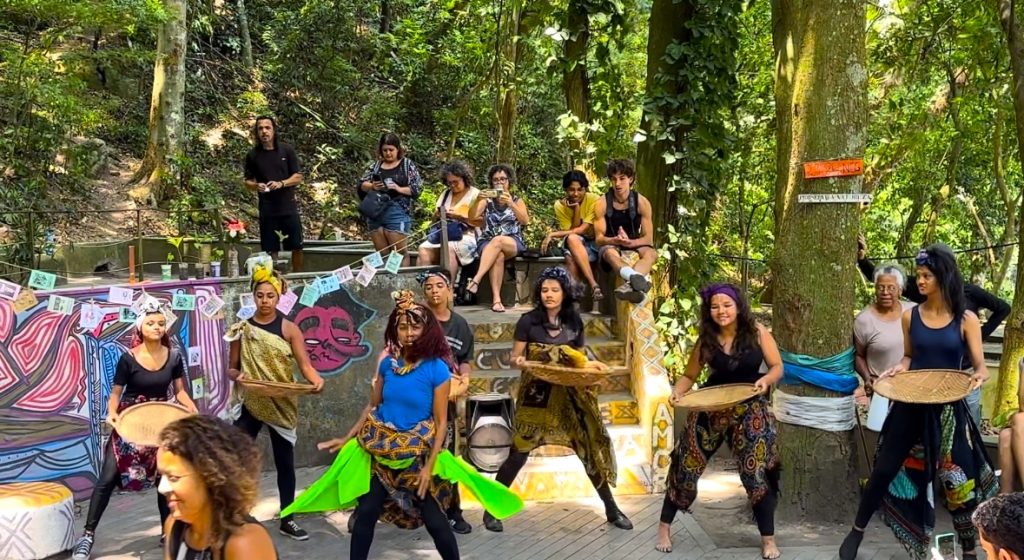
Historical roots and urban evolution
Older residents recall Rocinha’s rural beginnings when early settlers cultivated vegetables and sold them at Largo das Três Vendas (now Santos Dumont Square) in the neighbourhood of Gávea―a history reflected in its name, which translates as “small farm”.
The development of Rio de Janeiro’s affluent Southern Zone in the 1940s, marked by rapid construction and urban expansion, directly influenced the emergence of Rocinha as an informal settlement. As residents moved into the area, construction projects required a large labour force, attracting workers―many of them migrants from Brazil’s Northeast―who were excluded from the formal housing market. These workers began occupying the hills near their places of employment, leading to the informal establishment of Rocinha. Over time, the settlement rapidly expanded, reflecting the socio-economic divide between the affluent neighbourhoods they served and the underserved community they built.
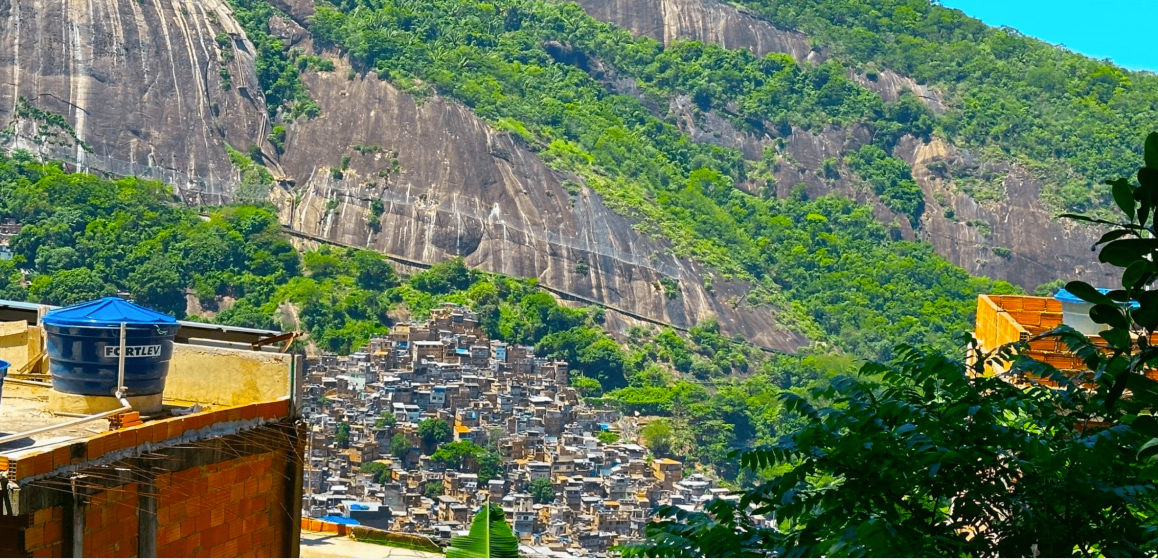
Rocinha has undergone significant changes over the decades. Until the 1980s, the community lacked running water, and electricity was installed informally. Homes were constructed using wood, and open sewage trenches ran throughout the area. Today, energy provision remains a perennial challenge, with power lines often tangled around utility poles and exposed along streets, frequently causing electrical short circuits.
At the edge of the Atlantic Forest
Rocinha sits at the edge of the remnants of the Atlantic Forest, one of the most biodiverse yet threatened ecosystems on the planet. Despite substantial urbanisation pressures―such as significant habitat fragmentation, pollution, and invasive species―what remains of the Atlantic Forest exhibits remarkable vitality. Efforts to safeguard this ecosystem expose deep tensions between living systems, the relentless expansion of housing, and community-driven initiatives for bio-cultural-spatial regeneration.
The Parque Ecológico Rocinha (Rocinha Ecological Park), created and maintained by a collective of residents, artists, and environmentalists, plays a vital role in these regeneration efforts. The idea for the park originated from the community itself, offering an alternative to the Rio de Janeiro municipality’s controversial proposal to construct a wall around the area to prevent the community’s expansion into the forest. The collective, known as Amigos do Parque Ecológico da Rocinha (APER), believes that thriving within Rocinha’s complex systems is not achieved by building walls but by expanding the horizons of care.
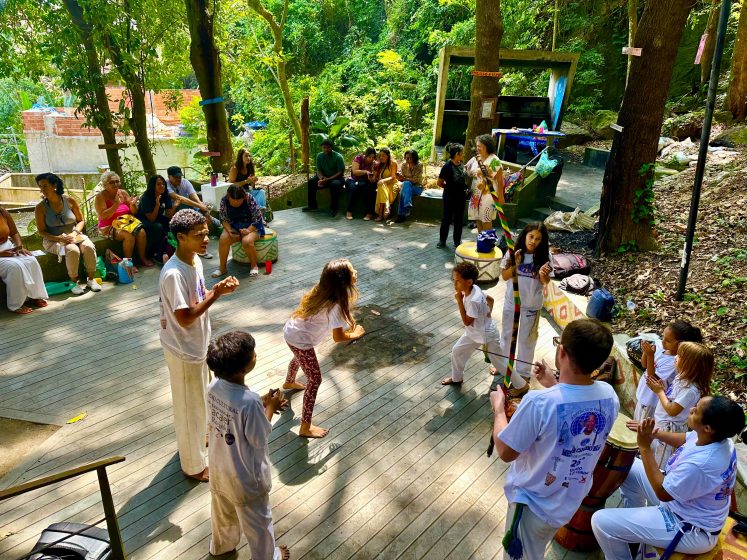
On the last Saturday of each month, the park hosts mutirões―community-led clean-up initiatives where residents come together to revitalize and nurture their shared green spaces. These activities often address issues such as safe disposal of construction waste, while contributing to the ecological integrity of the territory through native species reforestation projects. The ecological park serves as a sanctuary for flora and fauna, a recreational haven for residents, a platform for cultural exchange, and an educational resource for children and youth.
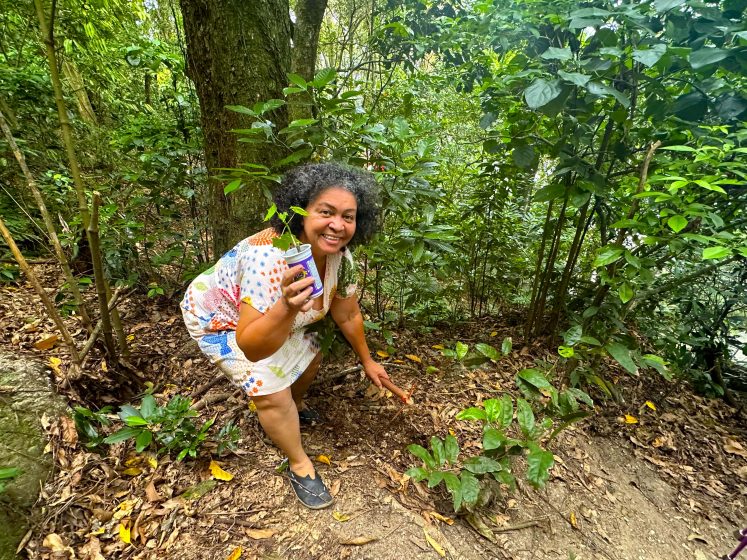
Bio-cultural-spatial vitality
Rocinha thrives as a cultural territory, renowned for its Northeastern Brazilian cuisine, the Acadêmicos da Rocinha samba school, street art, and artisanal crafts. It has increasingly, become a tourist destination, drawing as many visitors as Rio’s iconic landmarks like Sugarloaf Mountain and Christ the Redeemer. Tourists are attracted to Rocinha’s panoramic views, vibrant nightlife, and cultural vitality with services offered in Portuguese, English, and Spanish, reflecting its growing international appeal.
It is in this lively maze of narrow footpaths interlinked to a few central roads at the edge of the Atlantic Forest where public life comes together, and community issues are discussed. Amongst this buzz of human interaction writers, poets, environmentalists, graffiti artists, choreographers, and “artivists” meet to reflect on, compose, draw, dance, and write about the richness of the restless, forward-thinking, hopeful life of Rocinha.
In my recent book What if Women Designed the City? I introduce the concept of “presency”―a blend of presence and agency. This concept combines mindful attention to life, moment by moment, with a critical awareness of the context and capacity to act.
The “artivists” of Rocinha embody this “presency” daily as thoughtful actors, transforming themselves in the process of changing their environments. Through collective initiatives like design charrettes in partnership with the universities UFRJ and PUC-Rio, as well as cultural gatherings at the Parque Ecológico, they acknowledge that profound changes in their slum community seldom emerge from “unrepresentative” policy-making processes, nor from purely functional and technical changes to urban infrastructure.
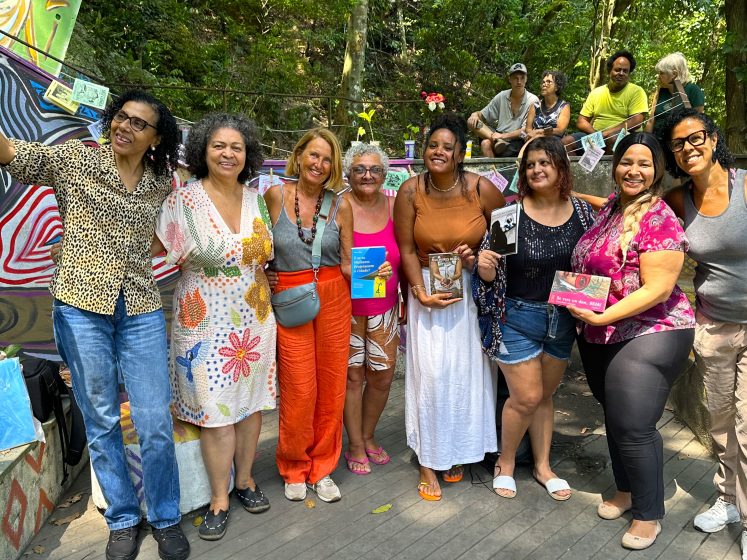
Rather, changes in their territory are catalysed and embodied through poetry, solidarity, deep dialogues, planting, collective mutirões, and creative arts initiatives. By adopting a perspective rooted in the bio-cultural-spatial uniqueness of place, the community uncovers interdependent relations between seemingly isolated elements and, in turn, fosters regenerative human and non-human co-habitation.
May East
Edinburgh
On The Nature of Cities
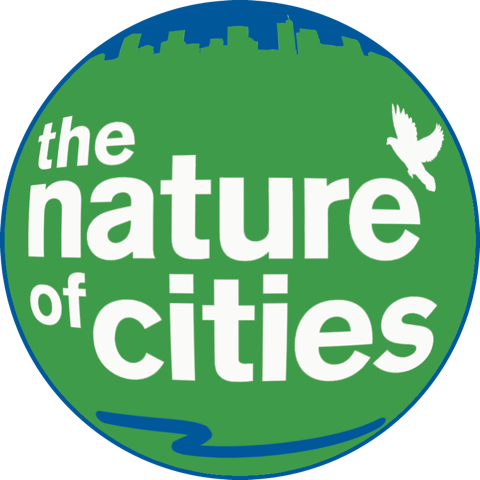
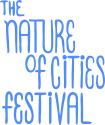
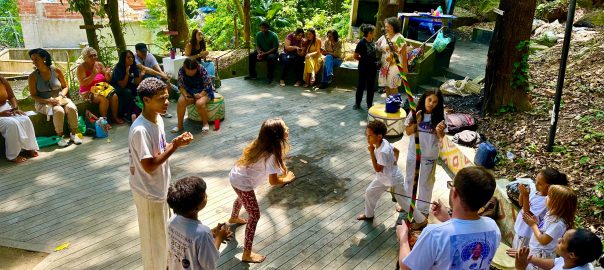
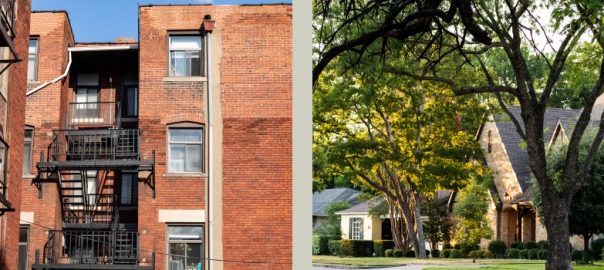
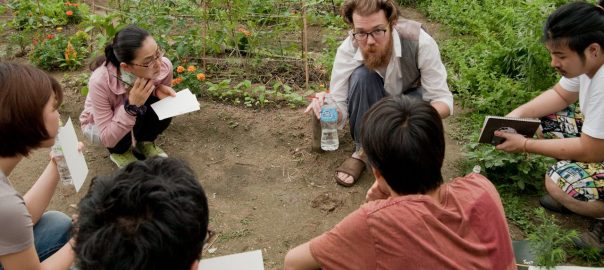
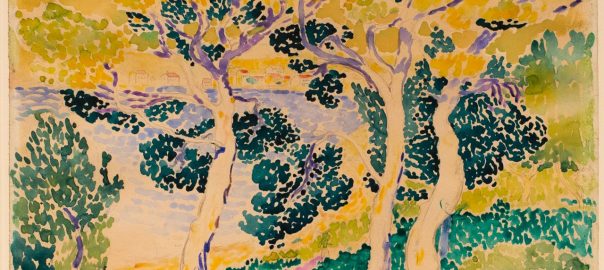

Leave a Reply